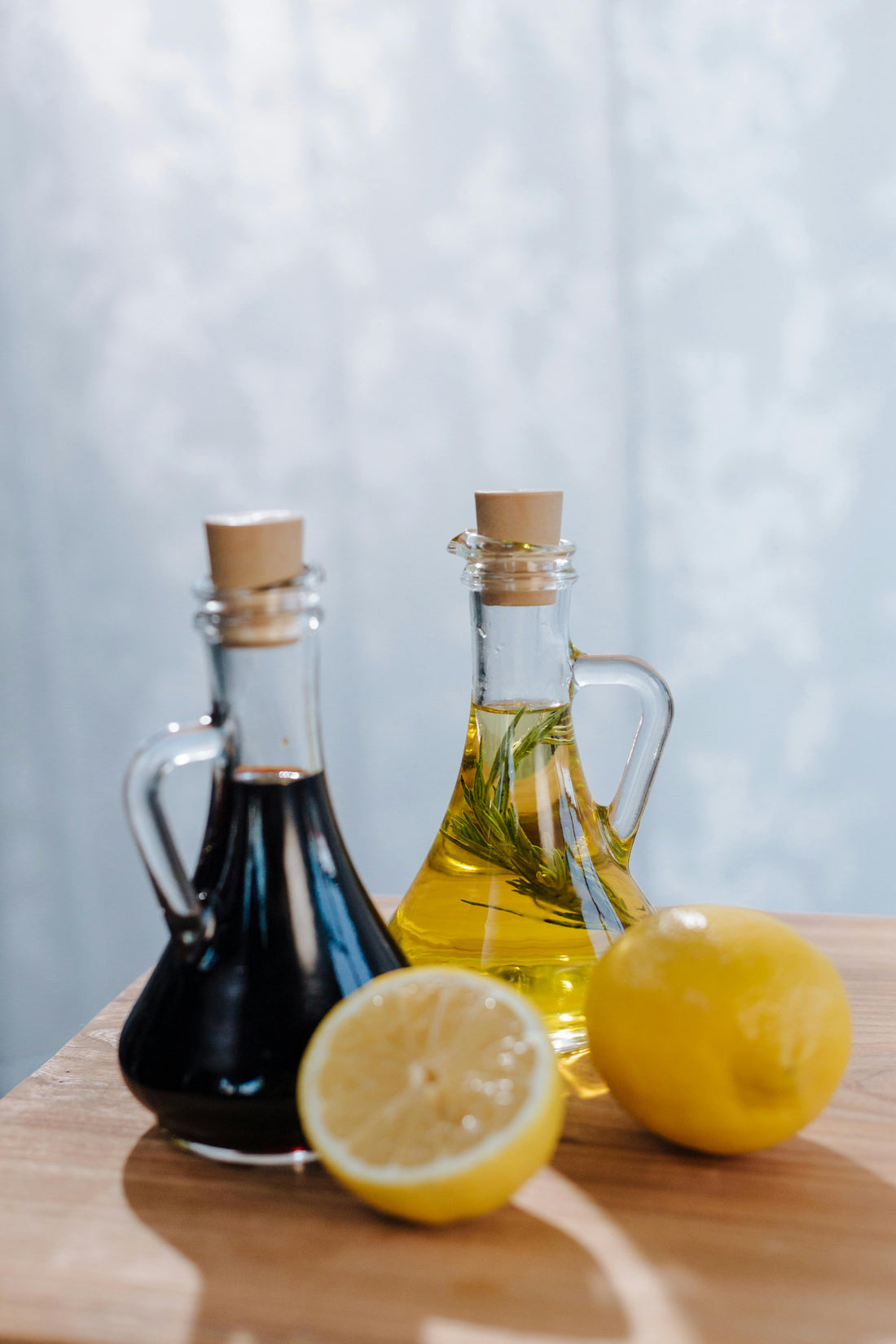
The Art of Pairing: Matching Olive Lane's Balsamic Vinegars with Your Favorite Dishes
Share
Balsamic vinegar, with its rich, complex flavor profile, is a versatile ingredient that can elevate a wide range of dishes. At Olive Lane Oils, we offer a curated selection of premium balsamic vinegars that can transform your culinary creations. This guide explores the art of pairing balsamic vinegar with various foods, enhancing both everyday meals and gourmet dishes.
Understanding Balsamic Vinegar
Originating from Modena, Italy, traditional balsamic vinegar is made from freshly crushed grape juice, known as "must," which is cooked and then aged in wooden barrels. This process results in a dark, syrupy vinegar with a balance of sweet and tangy flavors.
Variations include:
- Traditional Balsamic Vinegar: Aged for 12 years or more, offering deep complexity.
- Balsamic Vinegar of Modena: Aged for a shorter period, with a lighter flavor.
- White Balsamic Vinegar: Made from white grapes and aged less, yielding a lighter color and milder taste.
Classic Pairings
1. Cheese
Balsamic vinegar pairs exceptionally well with cheeses, enhancing their flavors:
- Parmigiano-Reggiano: Drizzle aged balsamic over shavings of this hard cheese for a savory-sweet appetizer.
- Goat Cheese: The tanginess of goat cheese complements the sweetness of balsamic.
2. Fruits
The acidity of balsamic vinegar balances the sweetness of fruits:
- Strawberries: A classic combination, especially when the vinegar is reduced to a glaze.
- Peaches and Pears: Grilled or fresh, these fruits benefit from a balsamic drizzle.
3. Salads
Balsamic vinegar is a staple in vinaigrettes:
- Caprese Salad: Tomatoes, mozzarella, and basil come alive with a splash of balsamic.
- Mixed Greens: Combine balsamic with olive oil for a simple, flavorful dressing.
Innovative Pairings
1. Desserts
Balsamic vinegar can add depth to sweet dishes:
- Ice Cream: Vanilla ice cream topped with a balsamic reduction offers a sweet-tart contrast.
- Chocolate Desserts: A few drops of balsamic can enhance the richness of chocolate cakes or brownies.
2. Beverages
Incorporate balsamic vinegar into drinks for a unique twist:
- Sparkling Water: A splash of balsamic adds complexity to plain seltzer.
- Cocktails: Use balsamic in place of bitters for a novel flavor profile.
3. Marinades and Glazes
Balsamic vinegar is excellent for marinating meats and vegetables:
- Chicken or Pork: Marinate meats in a mixture of balsamic, garlic, and herbs.
- Roasted Vegetables: Toss veggies in balsamic before roasting to enhance their natural sweetness.
Selecting the Right Balsamic Vinegar
When choosing balsamic vinegar, consider the following:
Age: Older vinegars are more concentrated and complex.
Ingredients: Look for vinegars made from grape must without added sugars or caramel.
Origin: Authentic balsamic vinegars come from Modena or Reggio Emilia in Italy.
At Olive Lane Oils, we offer a variety of high-quality balsamic vinegars to suit every palate and dish.
FAQs (Frequently Asked Questions)
